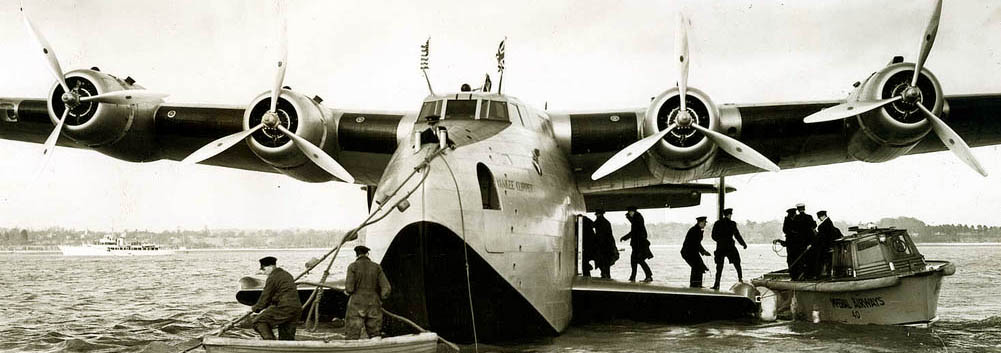
Aviation of World War II


 |
Aviation of World War II |


|
|
Soviet Union | Lend - Lease | Facts | Forum | Germany | Japan | R A F | U S A A F | Other | Photos |
|
|

Boeing B-314 Clipper
The power plant consisted of four newly developed Wright GR-2600 "Twin Cyclone" 1200 hp engines. from. each, the power of which was subsequently brought to 1600 liters. The B-314 crew was supposed to consist of ten people: two pilots plus a third shift, navigator, flight engineer, radio operator and four flight attendants. Behind the cockpit, located on the "second floor", there was a recreation area and a large luggage compartment. On the "lower deck" there was a saloon with 74 seats or 50 sleeping places, divided into 4 compartments. The first flight, which took place on June 18, 1938, showed insufficient directional stability. To increase it, it was ultimately necessary to install three keels, while the rudders were mounted only on the side keels. The first six aircraft (serial numbers from 1988 to 1993) were registered from NC-18601 to NC-18606 and their own names: "Honolulu Clipper", "California Clipper", "Yankee Clipper", "Atlantic Clipper", " Dixie Clipper and American Clipper. The speed of the Model-314 reached 292 km/h, which is not at all bad for such a bulky and non-streamlined aircraft, and the range was 5600 km; but the designers continued to work on improving the data of the machine. On March 20, 1941, the improved Clipper Model-314A made its maiden flight. It had engines boosted to 1600 hp, an increased fuel reserve of 4542 liters and other improvements, as well as a different layout of the saloons. Six aircraft already built were retrofitted according to the 314A model. Of all the aircraft originally built as Model-314A (registered NC-18607 to NC-18612, serial numbers 2081 to 2086), three were sold to the UK - said to have been done at the personal request of President Roosevelt, NC -18607, NC-18608 and NC-18610 were transferred to BOAC, where G-AGBZ, G-AGGA and G-AGCB were registered, respectively. During World War II, Boeing-314 aircraft were used as cargo aircraft to deliver cargo to the European theater of operations, as well as as service ones: NC-18605 "Dixie Clipper" in 1943 delivered Roosevelt to a conference in Casablanca (Morocco) and back, and to A copy of the G-AGGA "Berwick" was flown in 1941 by Winston Churchill, and for several minutes he flew the plane personally. After the war, the Clippers carried passengers for some time. Not a single copy has survived to this day, the last Clipper was scrapped in the early 50s. |
|
|